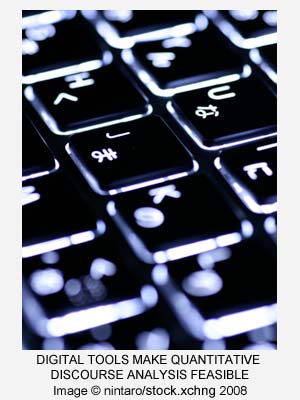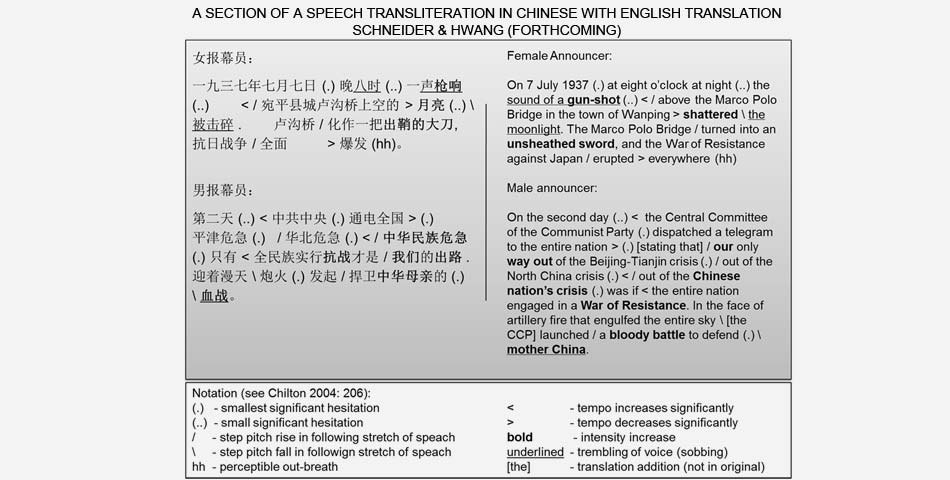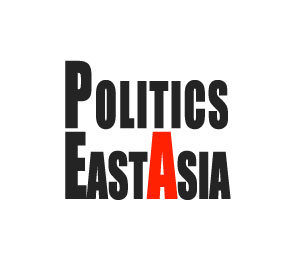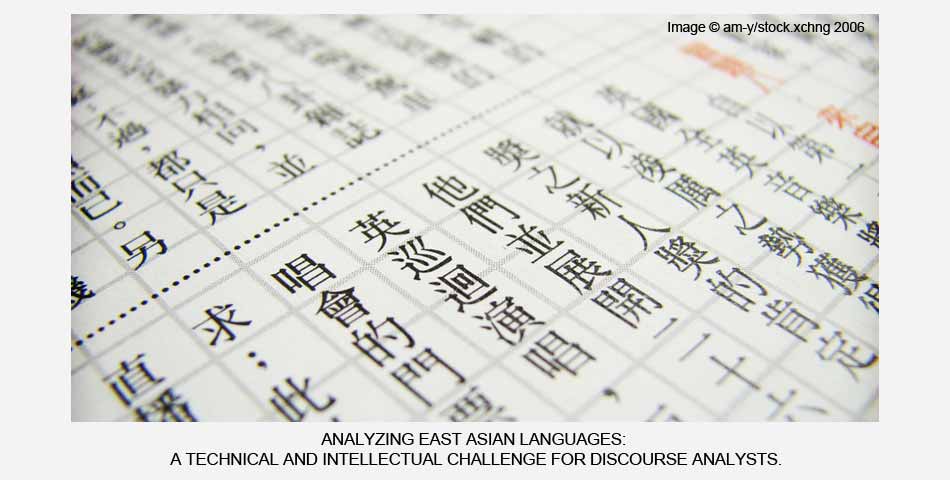Discourse Analysis and Foreign Languages
The Challenge of Working with East Asian Scripts
To conduct a discourse analysis, it is absolutely essential to work with original language materials. It is not possible to properly uncover how politics work through language if the research is based on translations. If, for instance, you analysed the speeches of Chinese politicians in English translation, then the main finding would be how the translators framed the argument in English. This in itself can be an interesting question, but it is likely not the one that you were planning to explore when you picked those speeches for your analysis. If you were hoping to analyse the political discourse within those speeches, then only the original wording can provide answers.
In this blog post, I discuss what issues you might come across as you work with foreign languages and scripts, for instance as you study political texts in Chinese, Japanese, or Korean (in short CJK). I will go over some of the software issues and analytical considerations you should be aware of, and will also provide you with tips on how to communicate your foreign-language research in English. As you will see, translating your original data for a presentation or a thesis is not a trivial task.
Technical issues: choosing software that works
If you are analysing political texts from East Asia, then you’ll be facing several challenges. Unless you are using print sources in their original paper-based format, then you need to ask yourself: which software can I use to analyse the kinds of scripts I am working with? For most qualitative work, the standard Microsoft or Apple office programmes will likely do the job. On older systems, like Windows XP, you may have to download a language extension pack to type Chinese, Japanese, or Korean, such as Microsoft’s Global Input Method Editor (IME) for Windows, but most up-to-date word processing packages should by default be able to at the very least display these scripts. If you want to learn how to activate support for a language like Chinese on different operating systems, take a look at the useful guide that the language school ChineseHour has put together. If you work with the Chinese language, and if you are able to read Dutch, then my colleague Jeroen Wiedenhof has compiled a treasure trove of tips and tools that you may find helpful.
For computer-aided analyses, you need to make sure that the software you use can handle the non-English script. You should also check whether you have your sources available in a font that supports the right code. When you look at a foreign script like Chinese on your screen, then the characters you see are actually “translated” by your computer from a series of signs. Without the right code, your computer will not be able to translate these signs, and you will either see the original string of meaningless characters or some placeholder (like square boxes). Most software needs your source text to be written in Unicode. Should you have a digital text in CJK that is not written in Unicode, you can use one of the many converters that are available online, like the one at mylangauges.org.
If you try to display a page that returns garbled code to you, then chances are the text was encoded in another format, such as the Big5 system used in Taiwan, Hong Kong, and Macao. To display such characters, adjust the encoding options. For instance, in Internet Explorer 10, you can simply right-click on the text and choose the correct option in the menu “encoding”. In Chrome, go to the options panel and choose tools/encoding. There are many useful guides online on how to get different browsers to display non-Latin scripts, and you should be able to find solutions online for all major operating systems and text editors.
[frame_right] [/frame_right]
[/frame_right]
The trickiest part is not to display the characters, but to analyse them digitally. You will need software that is able to recognize where a word starts and ends. In Chinese, for example, you need “smart” software that can identify the basic logic behind a string of characters, or otherwise it might take a word that consists of two characters and count each of those as separate words. This would result in faulty results. For example, the software might return all instances of the character “middle” (zhong 中) as separate entities, although in some cases that character might be part of the word “China” (zhongguo 中国). Make sure the software you use is either already equipped to recognize such multi-character words or that you have the option of “teaching” the software this crucial ability, for instance by uploading a specific code.
One open-source programme you can try out is Yoshikoder. My colleague Daniela Stockman (2010) has provided a detailed introduction to the Yoshikoder software and its uses. I myself use NVivo 10, which supports East Asian languages. This software is not free, but if you study at a university, chances are your institution has a subscription. In that case, university computer terminals either already feature this programme, or can be equipped with it fairly easily. Just make sure that you are indeed using the latest version. Older editions may not feature CJK support.
Translating your case into English
Even if you have no technical difficulties, working in a foreign language is always a challenge. If you are not a native speaker of the language you are analysing, make sure you ask a native speaker for feedback at various points in the process. You may otherwise overlook important meanings of words and phrases, particularly if a text works with metaphors, allegories, or implicit cultural references.
Then there is one final hurdle that will be a challenge to you whether you are a native speaker or not, and that is to translate your analysis into English. In your final report, be it a thesis or a presentation, you will likely have to show your audience many of the original-language examples. If I were to analyse, for example, how the Chinese government uses the discourse on “harmony” and a “harmonious society”, then I’ll likely show excerpts of Chinese sources in which I’ll highlight the characters for harmony (hexie 和谐), so that even someone who speaks no Chinese can follow my argument. In cases where I want to get the meaning across, I would then translate selected passages.
This last step, however, can be particularly tricky if you need to show how the structure of a sentence works. A key word may stand at the beginning of the sentence in Japanese, but once you translate the sentence, the word now appears in the middle or at the end of the sentence. In other words, the original syntax may be lost. You will have to make tough translation choices: should your English versions aim for maximum readability, or should they be true to the original sentence structure, even if the result sounds a bit like a speech by Master Yoda? Conducting an analysis is not always the same as producing the crispest possible translation. If a part of an analysis is very technical, and mainly concerned with grammatical structures, then a word-by-word translation may at times be the most appropriate way to show your audience how the language works, even if the result is not proper English.
However, if you do not need to be that specific, then it is probably wisest to try and represent the original meaning, including colloquialisms or metaphors, in a way that your audience can relate to. Tian Chuanmao has provided some very instructive examples of how difficult this can be. In such cases, you may have to use English phrases that do not work exactly the same way as the original but instead capture the thought behind the expression. A way to be academically responsible is to then create an annotated translation that explains your choices, important syntactic features in the original, and the cultural significance of the original wording (for instance the origins of a metaphor, or the logic of a rhyme scheme that does not translate well into another language).
Another challenge is analysing spoken words, particularly if your analysis examines how inflections and intonations shaped the statements. You will have to make a case-to-case decision on whether or not (and how) to reproduce your notes on these phenomena in your English translations. To give you an example, when my colleague Hwang Yih-jye and I were analysing a Chinese opera for its political content, we noticed that crucial elements were the highly emotional and patriotic announcements that came before each scene. To capture how the announcers used language to create this sense of pathos and frame the subsequent performance, we transcribed the texts and modelled the speech pattern by using a set of special notations (cf. Chilton 2004: 206). When we translated the results, we decided to create a working English-language version of the speech that included the same notations but that only reproduced the original syntax if this was possible in English (Schneider & Hwang, forthcoming). You can see a sample of the outcome below.
[frame] [/frame]
[/frame]
Make informed decisions and explain them
However you decide to deal with the challenge of analysing East Asian languages in your research, the most important thing is to be transparent about your choices. Make an informed decision that reflects your research concern. Then explain what that choice was at the start of your presentation, or in the first sections of your paper. If you lay open your own rationale, your audience may disagree with your choices, but at least they will recognize your reasoning as academically informed. You can then have a discussion with them about the finer points of your approach, rather than having to justify whether or not you knew what you were doing.
Once you have done the groundwork for your project, you can move on to analyse your data in earnest. If you need tips on how to do this, take a look at the ten work steps I recommend.
References:
Chilton, Paul (2004). Analyzing Political Discourse – Theory and Practice. London: Arnold.
Schneider, Florian & Hwang, Yih-Jye (forthcoming). “China’s Road to Revival: ‘Writing’ the PRC’s Struggles for Modernisation”. In Cao Qing, Paul Chilton, and Tian Hailong (eds.), Discourse and Social Transformations in Contemporary China. Amsterdam: John Benjamins.
Stockmann, Daniela (2010). “Information Overload? Collecting, Managing, and Analyzing Chinese Media Content” in Allen Carlson, Mary Gallagher, Kenneth Lieberthal, and Melanie Manion (eds.), Contemporary Chinese Politics: New Sources, Methods, and Field Strategies. New York: Cambridge University Press.
Share This Post, Choose Your Platform!
5 Comments
Comments are closed.



[…] If these theoretical discussions have sparked your interest, take a look at my post on how to set up a discourse analysis, at the ten work-steps that I recommend for analyzing written and spoken texts for political discourse, and at my advice on working with foreign scripts like Chinese, Japanese, and Korean. […]
[…] as they set up their discourse analysis project, and the things that are worth keeping in mind when working with East Asian language sources. In this post, I offer a handy set of tools for doing a text-based, qualitative discourse analysis. […]
[…] as a discourse analysis of an East Asian language – which requires translation – can be particularly challenging. To illustrate how ideas about identity and morality are discussed in the texts, I will have to […]
Question: What if one is dealing with data in multiple languages? For example the Muslim discourse on dignity in Norway, where one will end up e.g. with sermons in Arabic, interviews in English, and documents in Norwegian? Does it makes sense to translate everything into English and then do a less rigourous linguistic analysis, focusing more on concepts?
Hi Jan, I can see you point, i.e. that you might be interested in the general themes rather than the linguistics, and that the English translations could be sufficient to establish what those themes are. That said, what would be the benefit in such a case of translating everything into English first? I would not normally translate everything into the target language. Either you are only interested in broad-stroke themes, in which case you don’t need the full translation (provided you yourself can read the originals), or you are interested in deeper communication practices, in which case you’ll need to stick to the originals anyways. I would always conduct my analysis on the original materials, and I would then select only the most illustrative examples to translate and use in the actual write-up of my findings. Everything else can either receive a reference or go in the appendix, in case you want your readers to check the originals or your mark-up of those materials. Does that make sense?